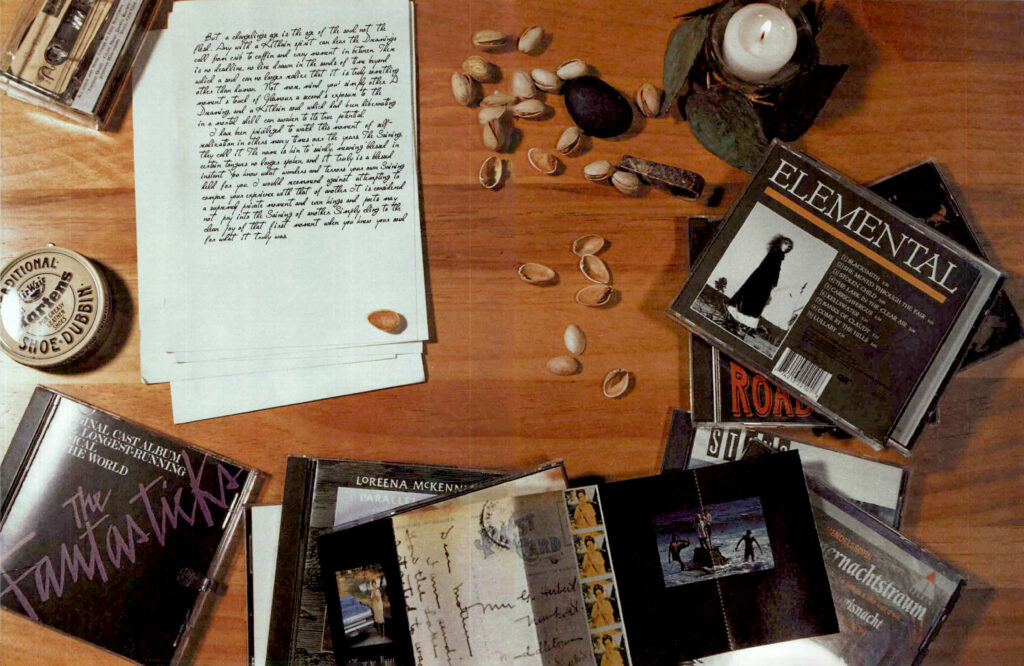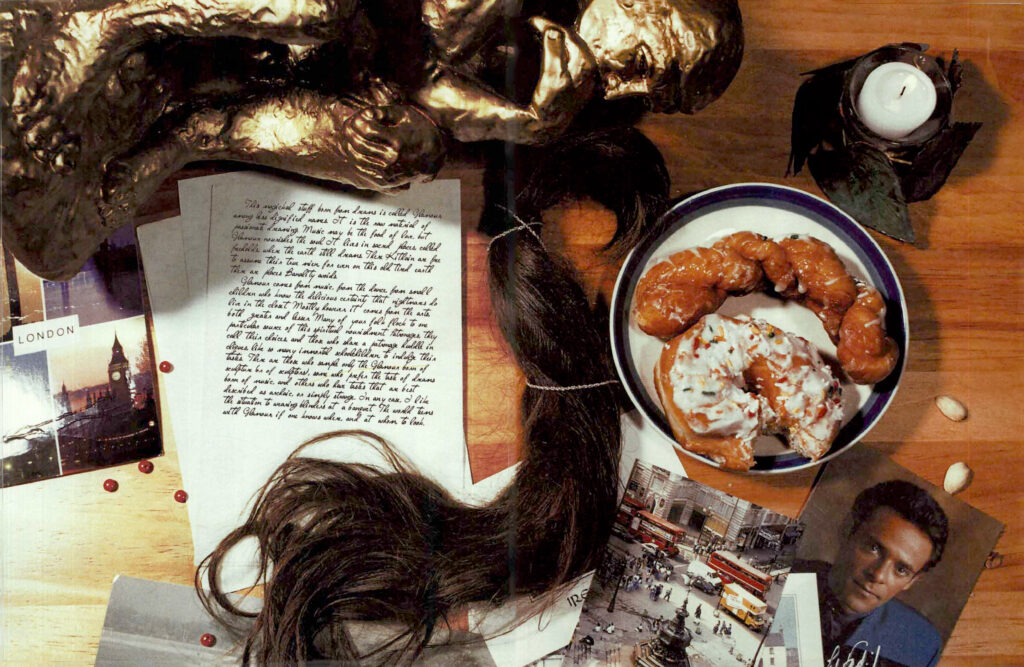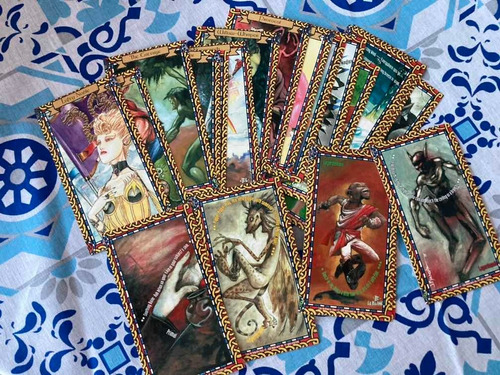This is the first of our deep dives into the individual books for Changeling, so naturally, we’re starting at the beginning, with the First Edition corebook. Released in July 1995, it was the last of the original lineup of five games for the World of Darkness. We go through each section of the book in detail, discuss it both in the context of its original release and the more recent editions, and talk about various themes and ideas that the text summons up. (Because the book is just short of 300 pages, this is also our longest episode by a wide margin… for now.)
art
Briefly, here are two examples of the full-page spreads that make up the book’s prologue:


Given how the World of Darkness books are kind of grim and gritty, printed in black and white, the use of these photographs as both diegetic texts (the pages contain information about the game setting, written by one of the metaplot characters to another) and an aesthetic choice (note the signed photograph of Dr. Julian Bashir, emphasizing the 90s-ness of these pages) creates a marked contrast to the other lines. That’s Changeling—starting off with a bang.
As for the other art in the book: some of the most iconic pieces are the diTerlizzi kith portraits used at the start of each chapter, which eventually became the covers for the kithbooks. But then there are things like a somewhat cartoonish satyr and sidhe (possibly) about to have a tryst. Sublime to puzzling and everything in between.
…
star trek
Speaking of Dr. Bashir, some thoughts from Pooka that got cut from the episode…
To me, there are some interesting parallels between the editions of Changeling and the Star Trek franchise. In the same way that the Original Series had its grognards from 20 or so years before the Next Generation came out, 1st edition Changeling is already set against a backdrop of a 20-year-old metaplot: the Resurgence and Accordance War. The characters, as a new generation of Kithain, are still positioned against that inherited history, which defines so much of the setting.
Then you get 2nd edition, which complicates and develops the setting, moving away from the general-backdrop setting to a specific metaplot arc: the disappearance of High King David. Like Deep Space Nine (or Voyager, I suppose), following hard on the heels of TNG, there is a single continuous story arc that structures everything in the game for that era. And after a gap of several years without any active shows, C20 has come back to heavily re-invent the game—as Discovery, Picard, and Lower Decks have done, creating an entirely new audience (and potentially a new set of grognards, for those who are now 20+ years out from TNG, DS9, and Voyager).
I don’t know that the “edition wars” of Changeling get quite as vicious as the flame wars Trekkies sometimes engage in, but it’s interesting to think about. This is going to stick in my brain like a piece of taffy on an August day.
…
cantrip cards
Briefly, here’s how the cantrip system worked in 1st edition:
- You have bought cantrip cards in packs of 10 and/or photocopied the template at the end of the corebook and filled them in. These are divided into individual levels of Arts and Realms, Bunks, Nightmares, and Treasures. They are also collectible, with over 160 different illustrated cards.
- The Art and Realm cards go into your hand, and correspond to the dots in each you’ve bought and listed on your character sheet. A number of Bunks equal to the total number of dots in Arts you have get shuffled into a deck.
- You cast a cantrip by choosing the appropriate Art and Realm from your hand and placing them in front of you, then drawing a Bunk card. (You can spend Glamour to draw additional ones.) Each Bunk involves performing a specific action, and limits the number of successes you can gain on your cantrip roll.
- The actual cantrip roll is determined by the Attribute associated with the Art + the Ability associated with the level of the Realm you have, against a difficulty of the target’s Banality.
- Failing the roll gives you a temporary point of Banality or puts a Nightmare card into your Bunk deck; botching gives you a permanent point of Banality. But, if the Bunk card matches the Art of the cantrip, you get a bonus success.
- All the cards except one are returned to where they came from; Arts and Realms go back in your hand, Bunks get shuffled into the deck. You can only regain all your cards after a “deep, satisfying and prolonged rest”—the book specifies that this occurs between stories, i.e., only after several game sessions—or by engaging in Reverie or Rapture (not Ravaging), which refreshes a number equal to the Glamour you gained…

Beyond this, there are additional rules about how oathmates can share and trade cantrip cards, successes being automatically determined by the Bunk card when they’re used in a freehold/on an enchanted being or chimera, changelings invoking Banality to resist a cantrip… and remember, you should be out there, buying packs of cards to shore up your deck! If it’s not already apparent why this system didn’t make it past the corebook (and indeed, the corebook itself has an alternate dice system), we’re not sure how much clearer we can make it. But vestiges of it continue to pop up throughout 1st edition books, so we have to deal with it.
As game props, they can be fun. As a necessary part of the already-complicated system of cantrip casting, they are punitive, confusing, and frustrating, so… best left out altogether, probably.
…
There’s plenty to love about 1st edition, and the corebook does a nice job of setting up themes and moods, foregrounding storytelling over mechanics, and introducing a number of concepts that are helpful for getting into the spirit of the game (and in a few cases, never appear again). As introductory books go, it’s a friendly and colorful one on the surface—but still with plenty of depth and complication underneath.
…
Your Hosts
Josh Hillerup (he/him) believes in the saving power of disco.
Pooka G (any pronoun/they) smells vaguely of fresh caramel and stale dreams.
…
“What else is a story but a dream that has been shared with the world?” —Joanne M. Harris, Honeycomb
(psst! email us at podcast@changelingthepodcast.com if you want)